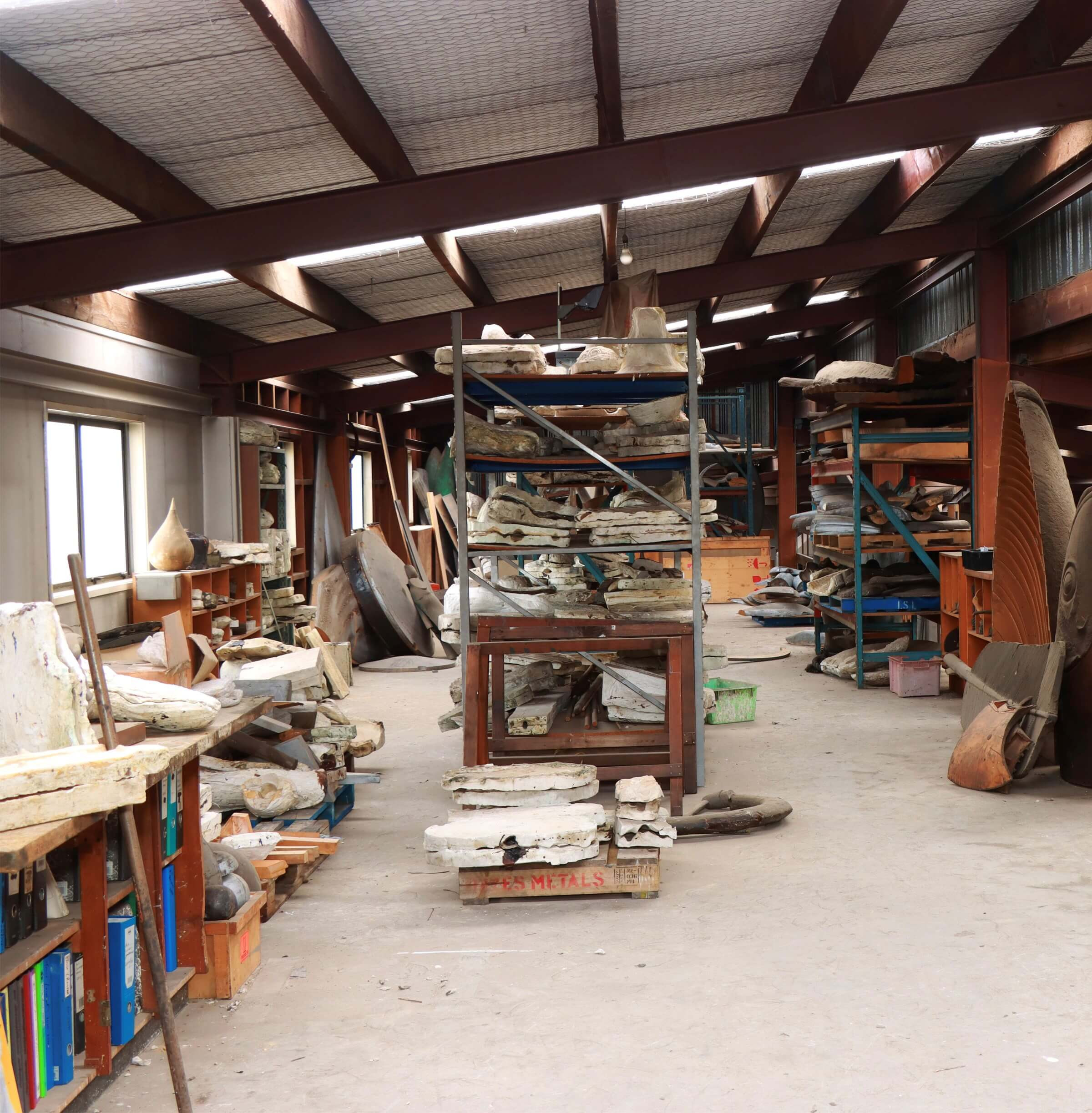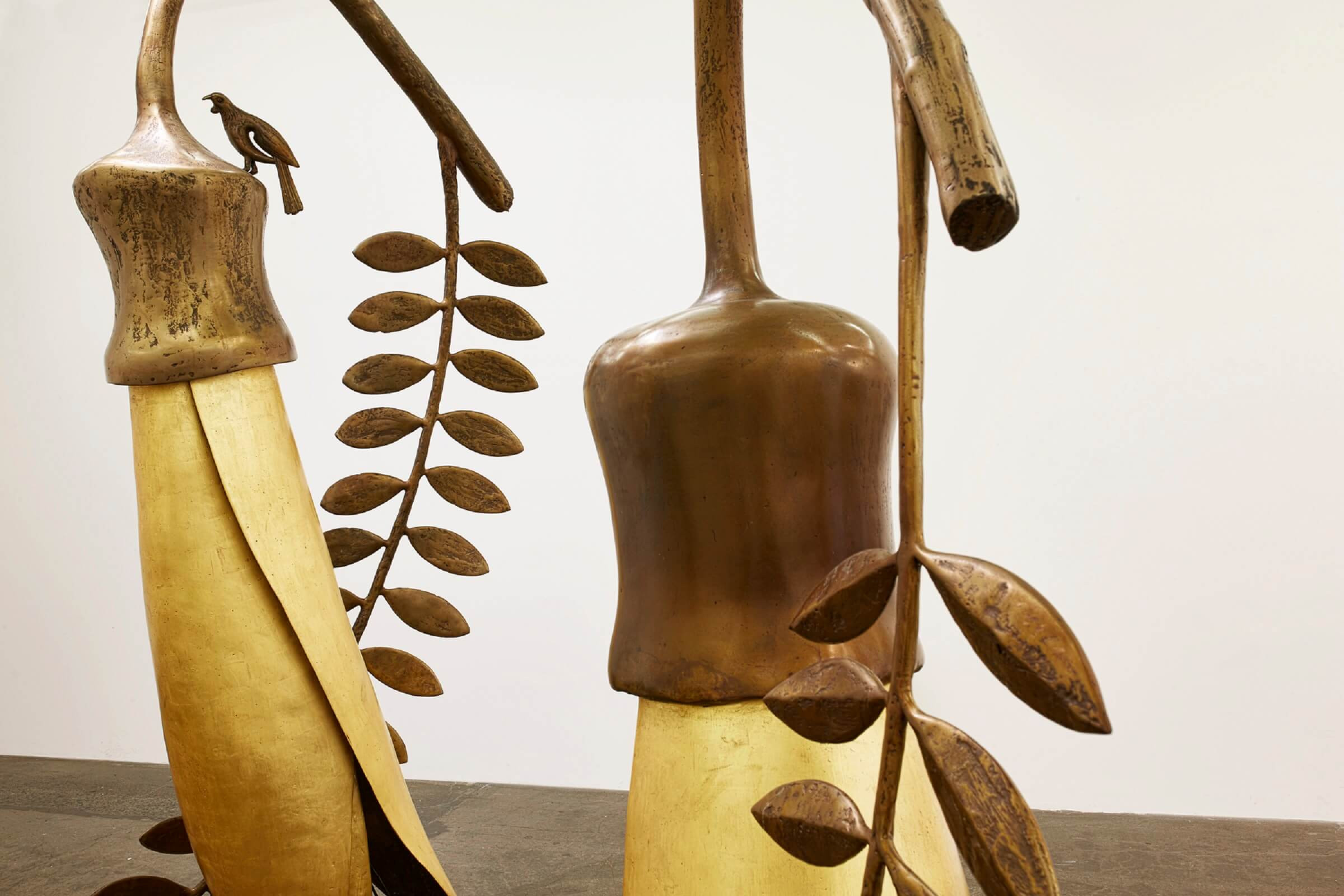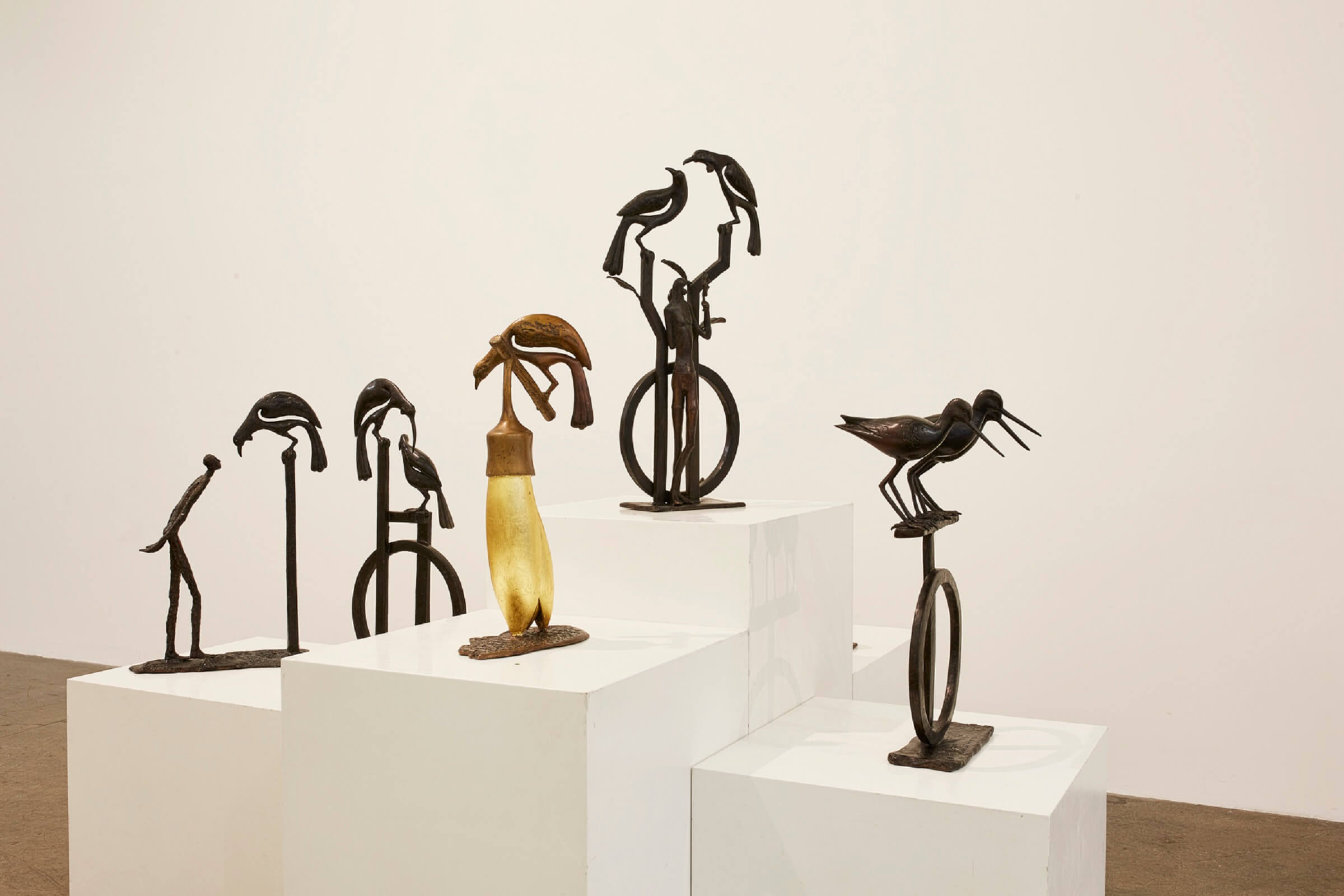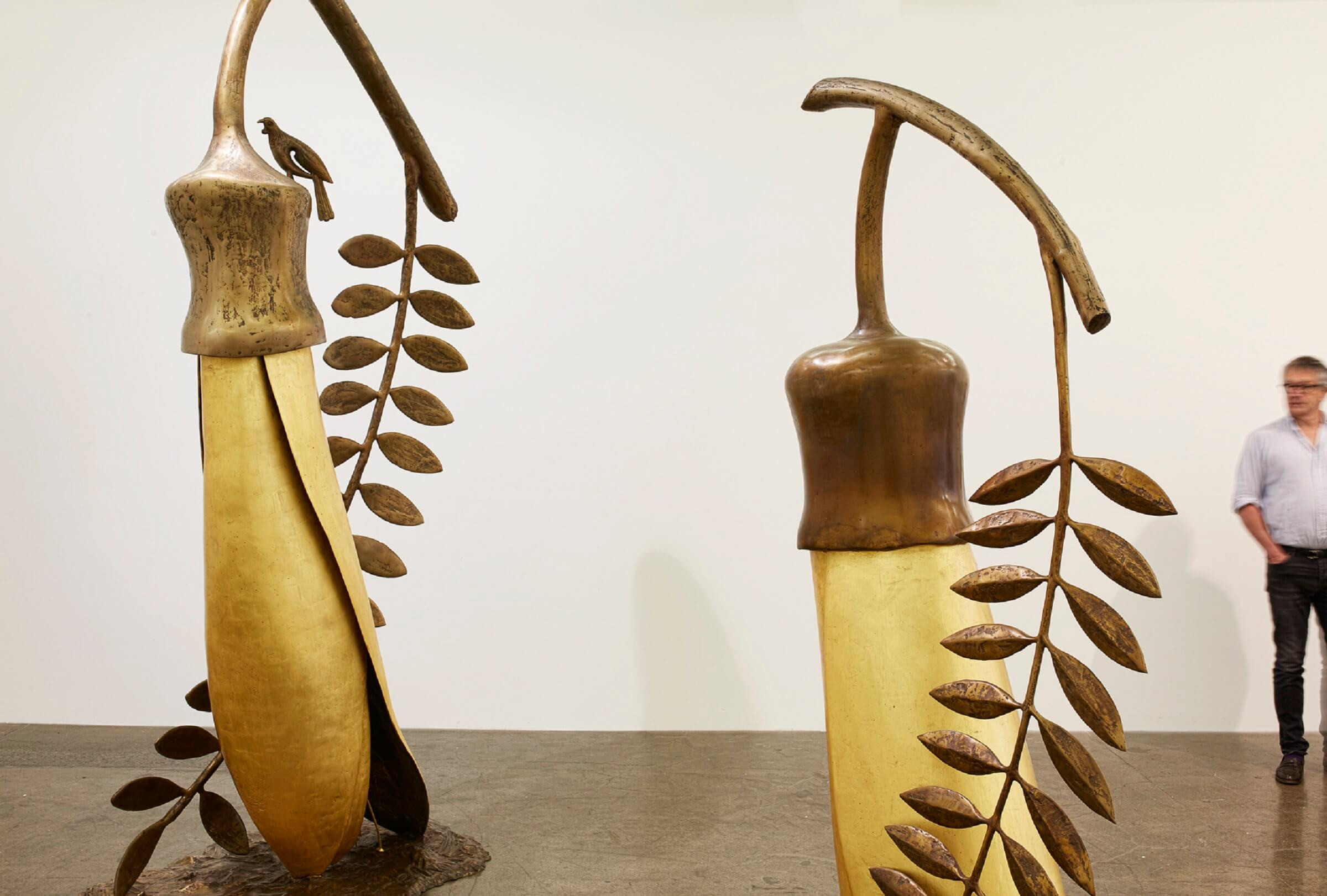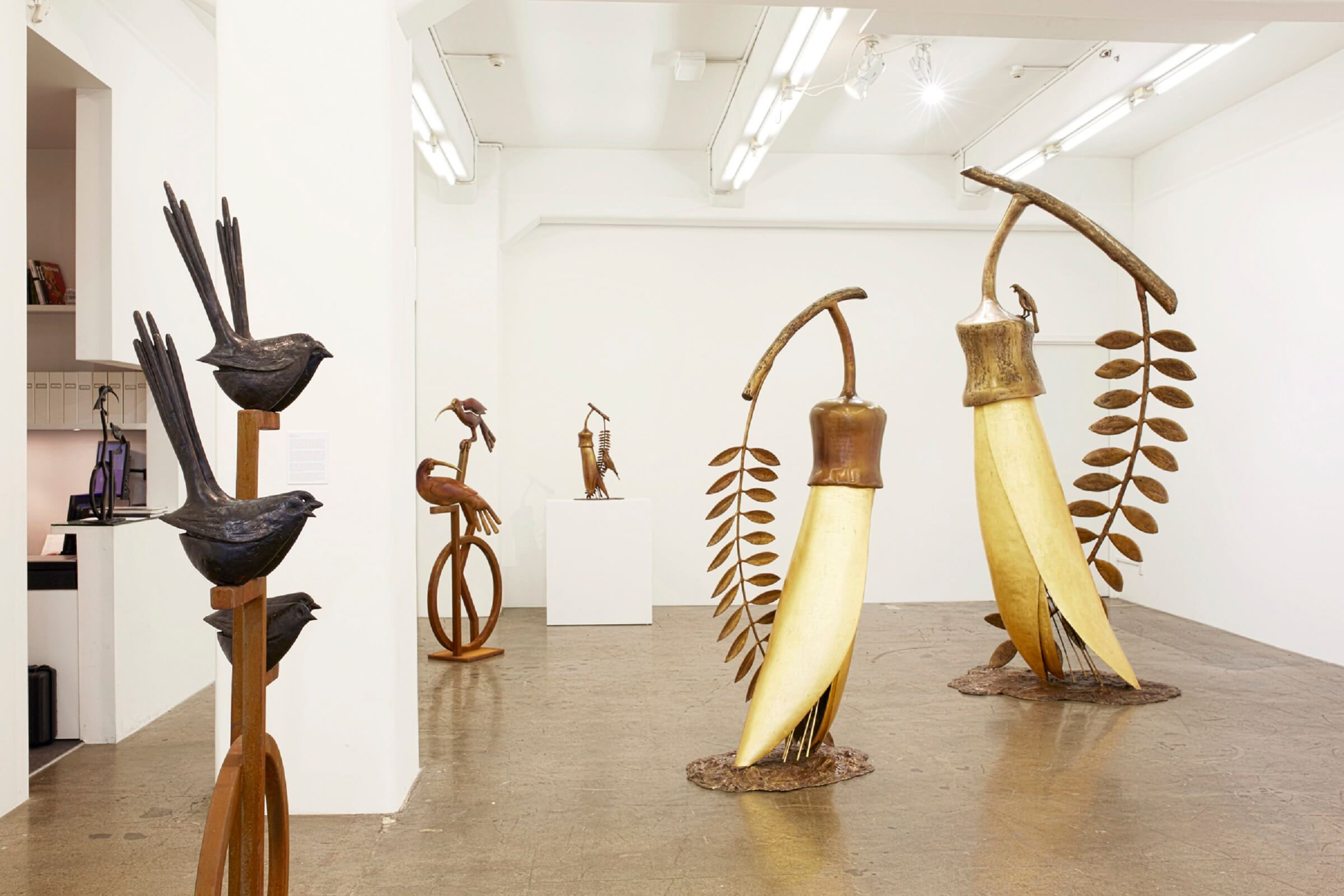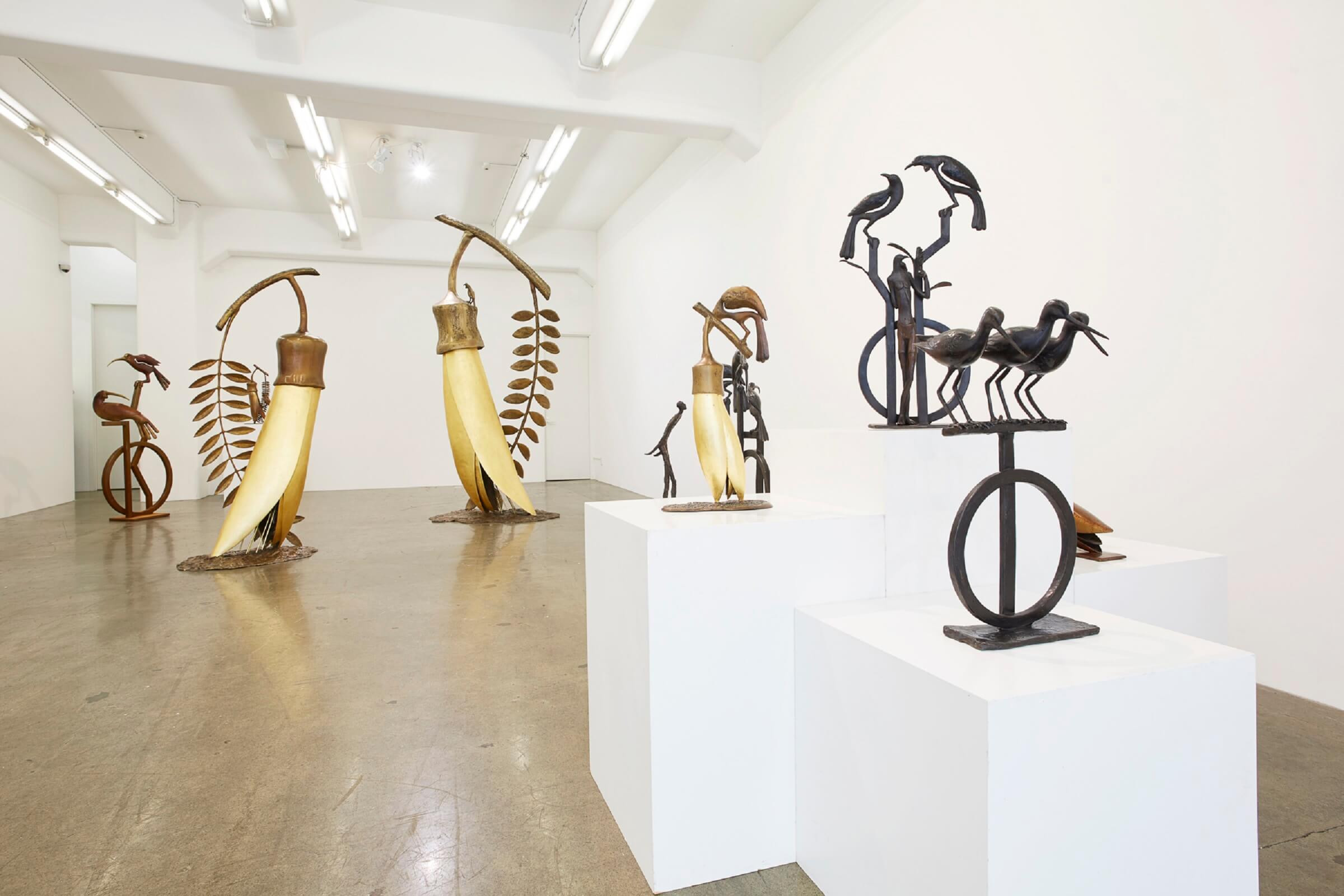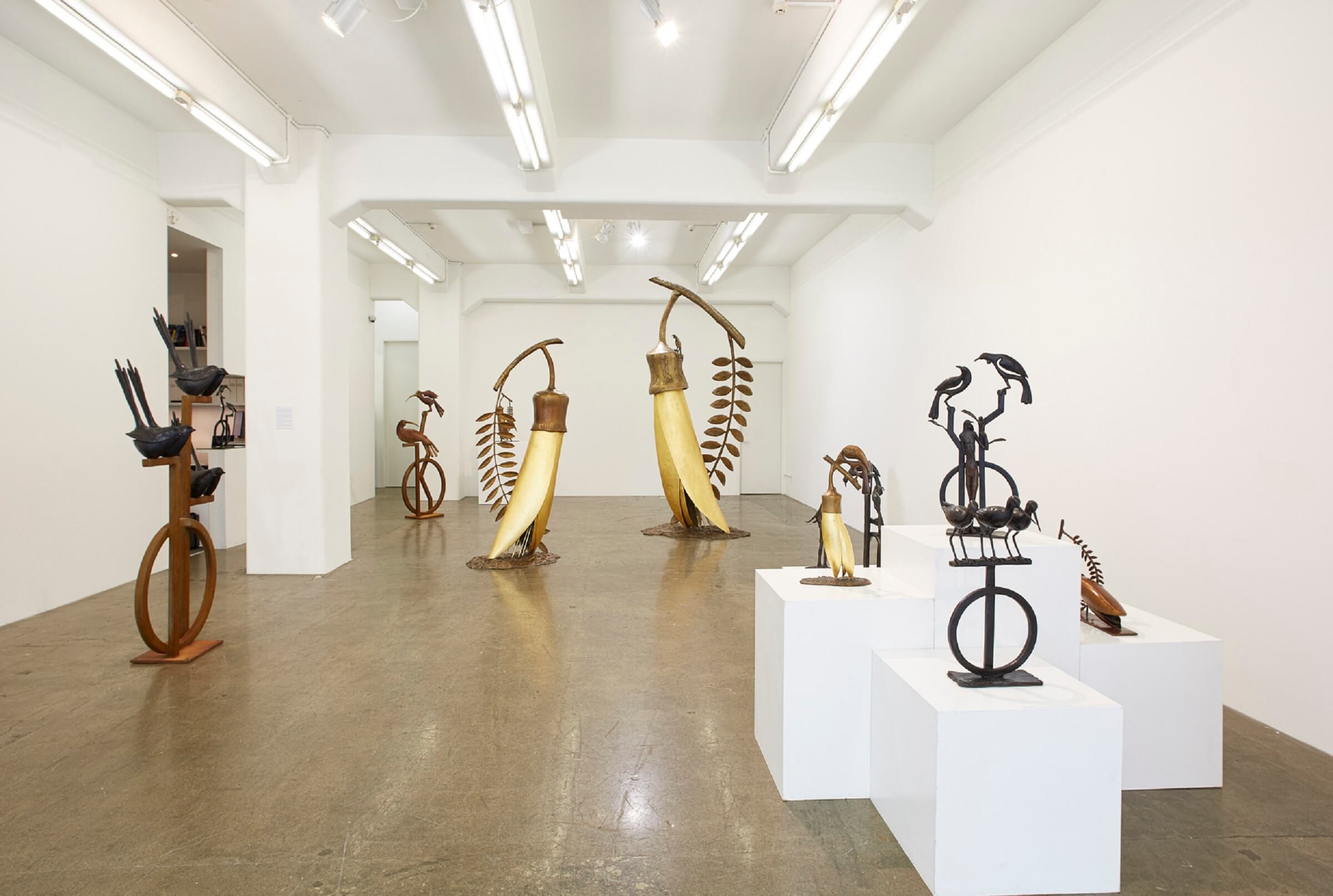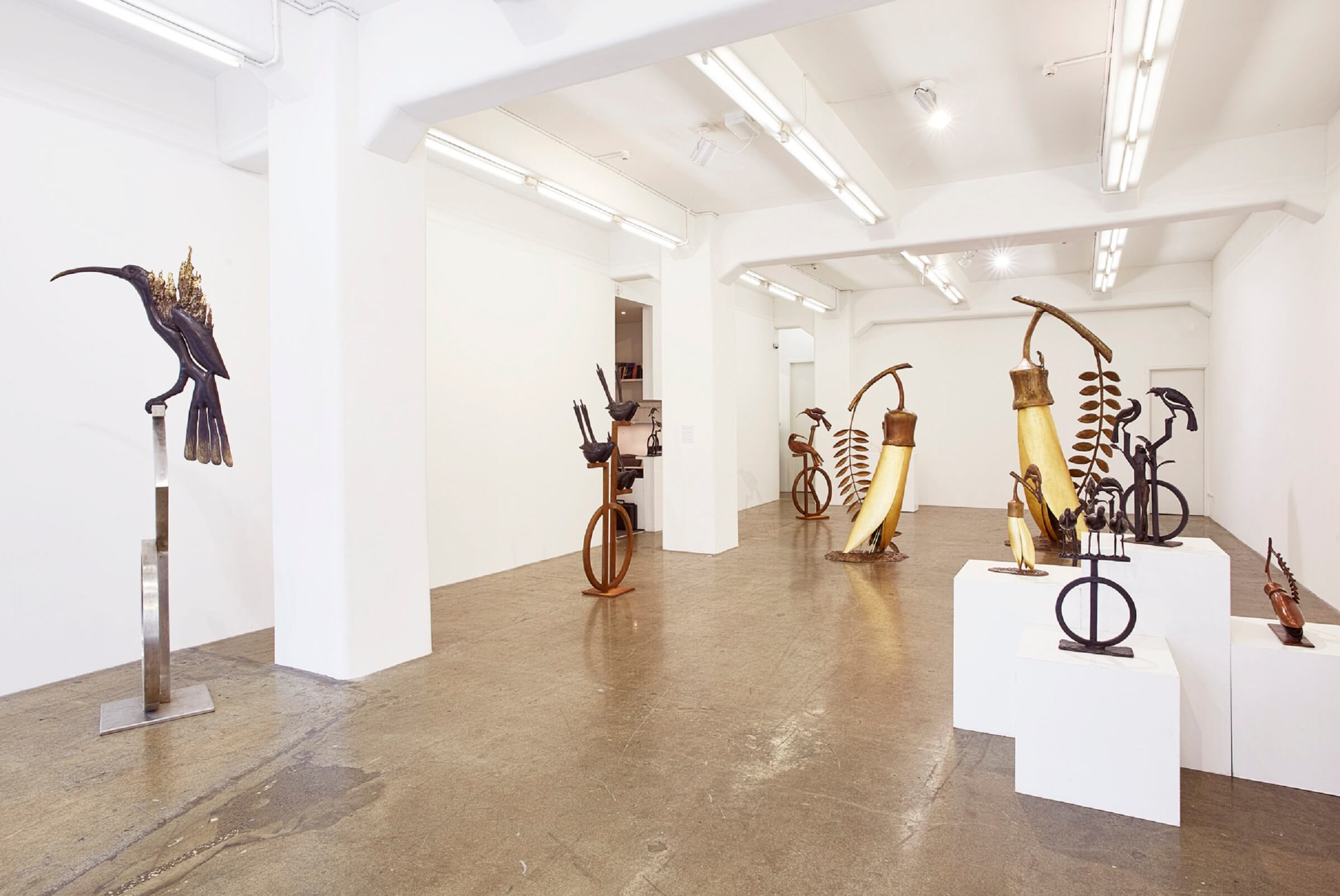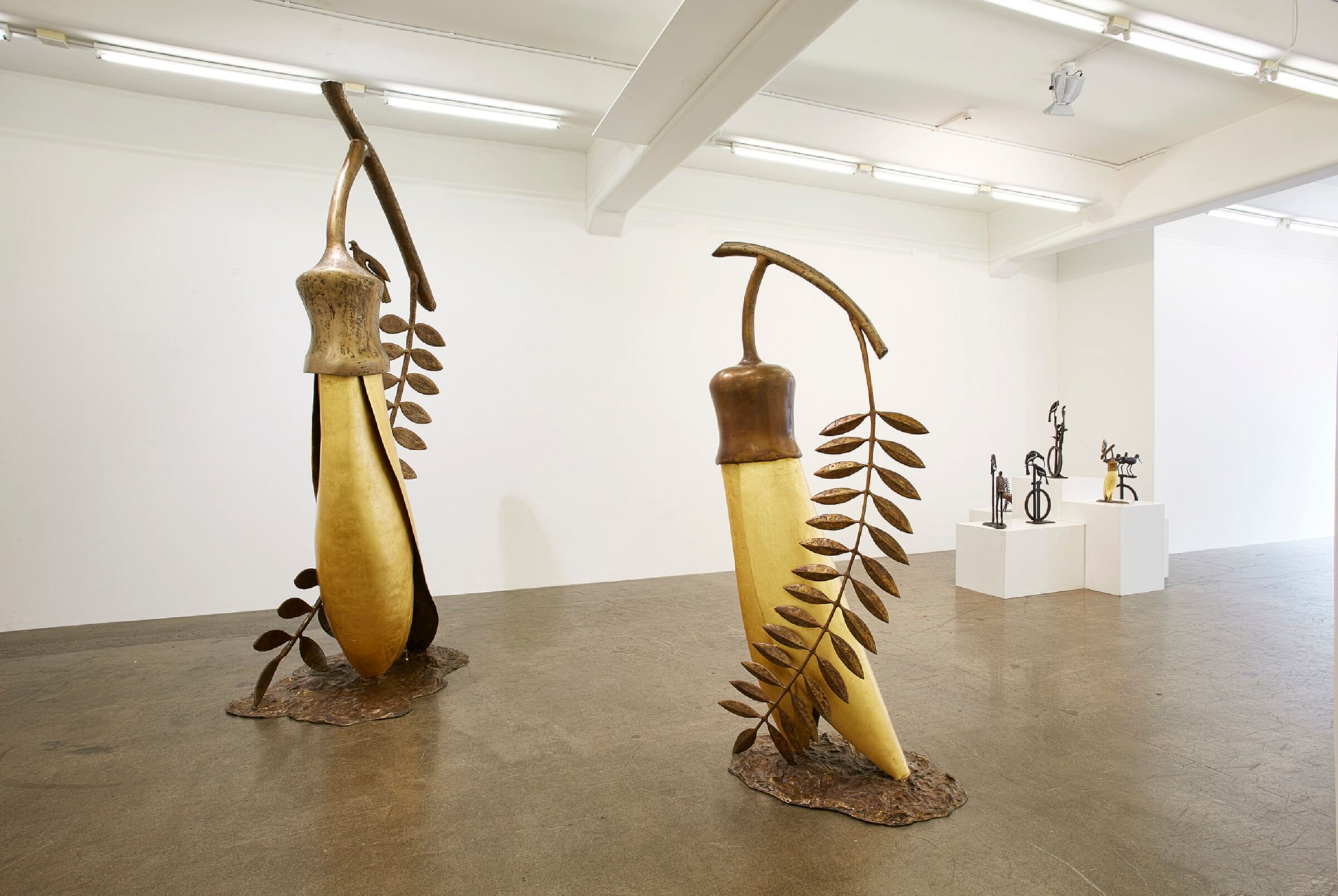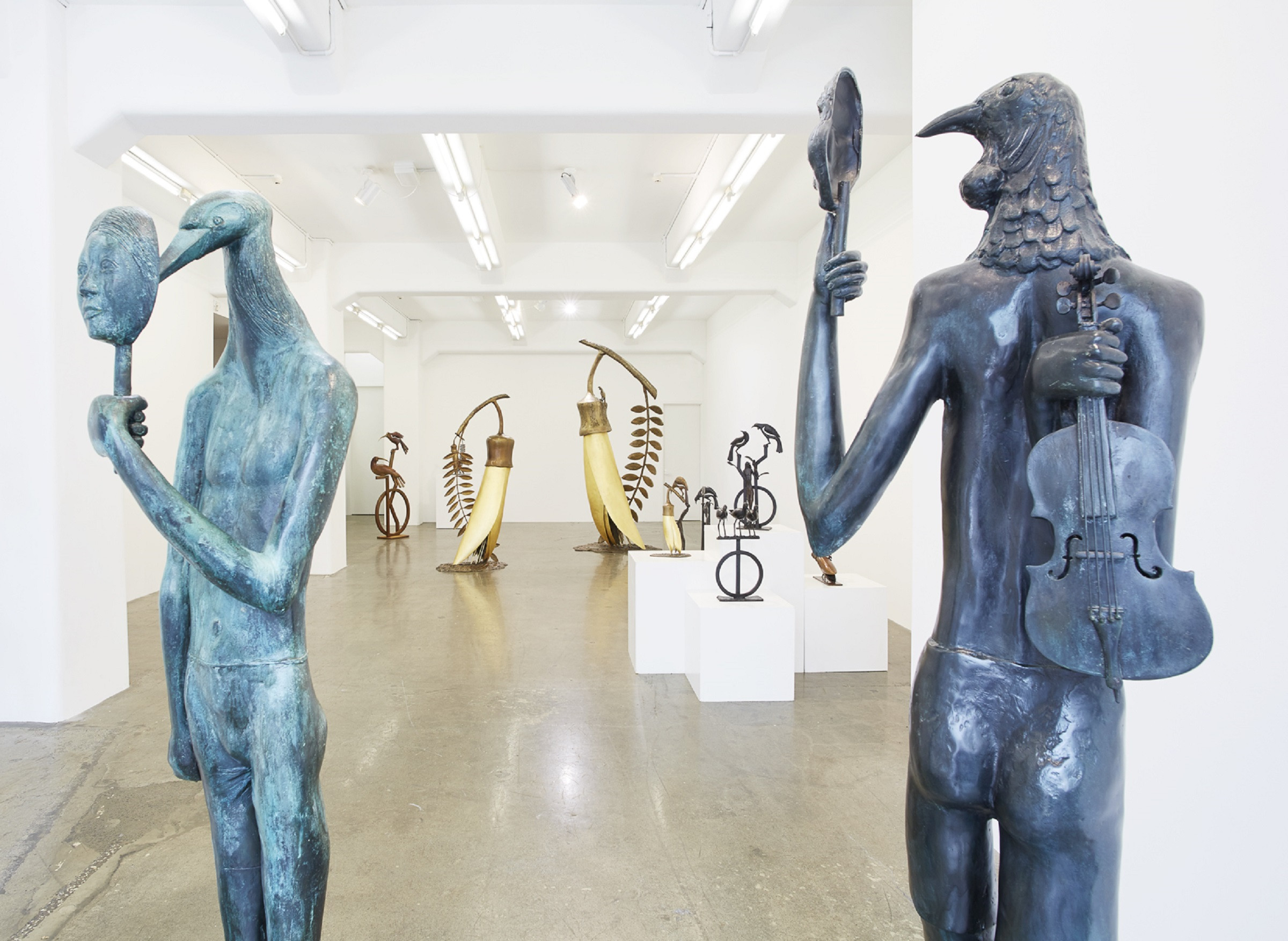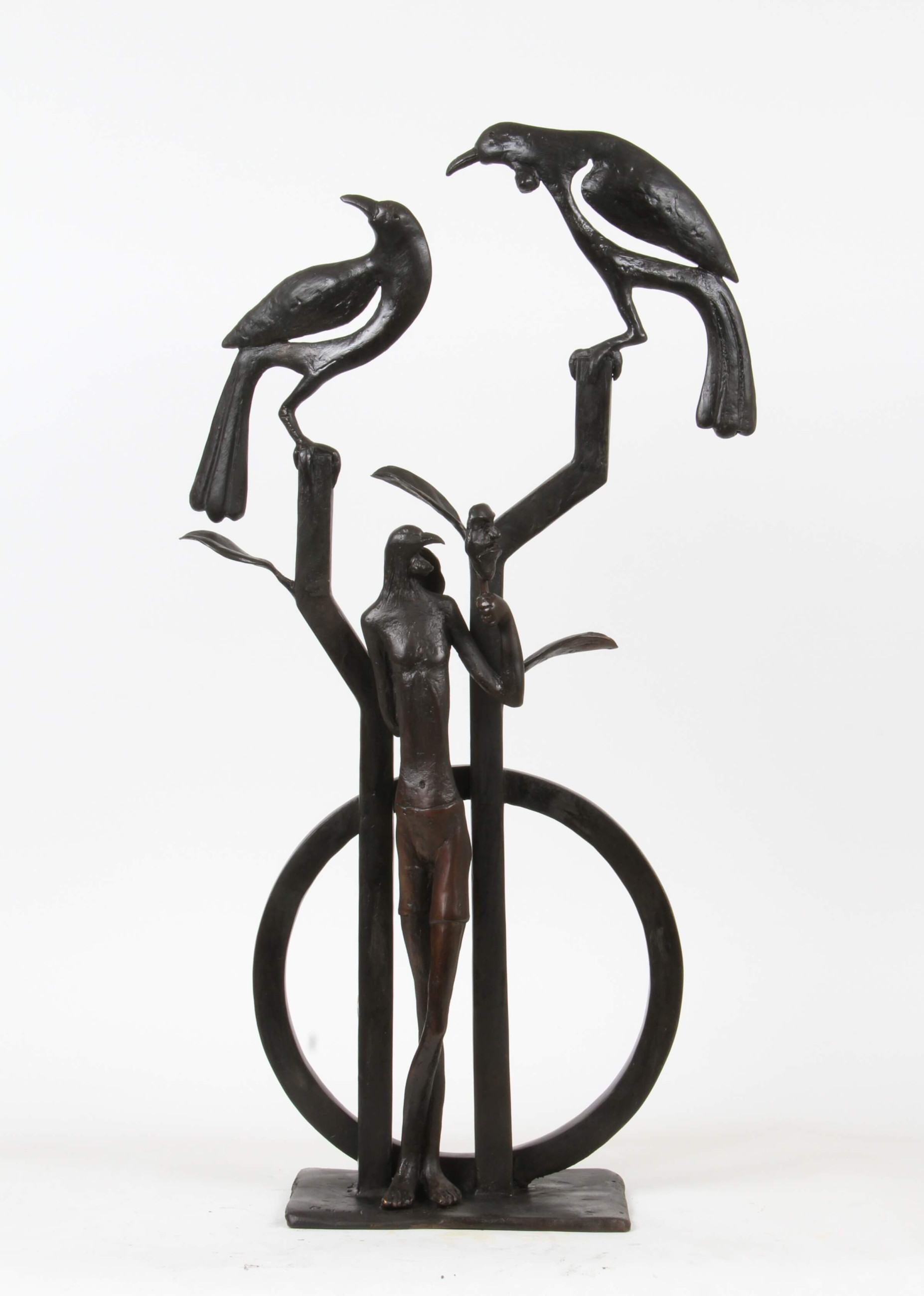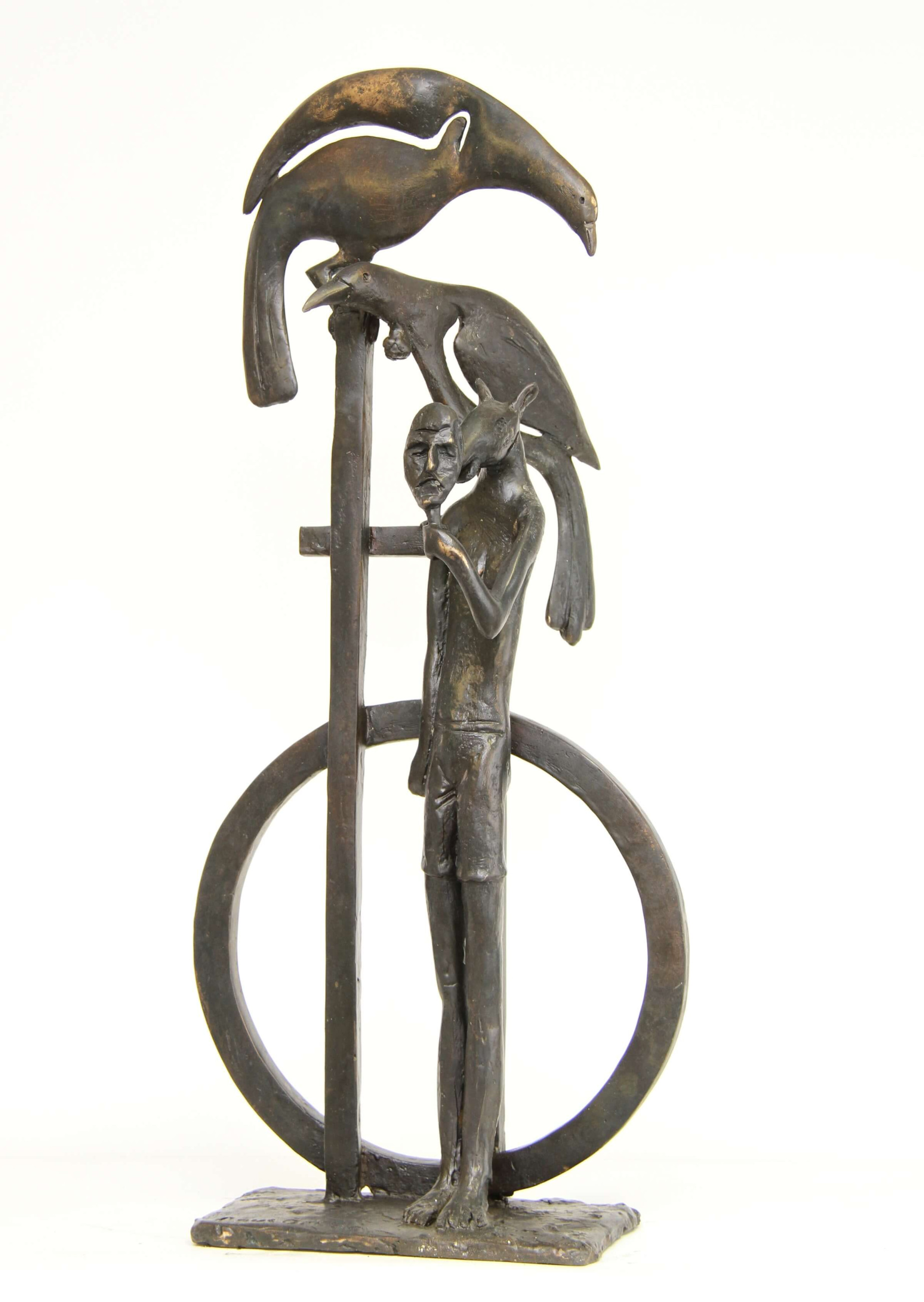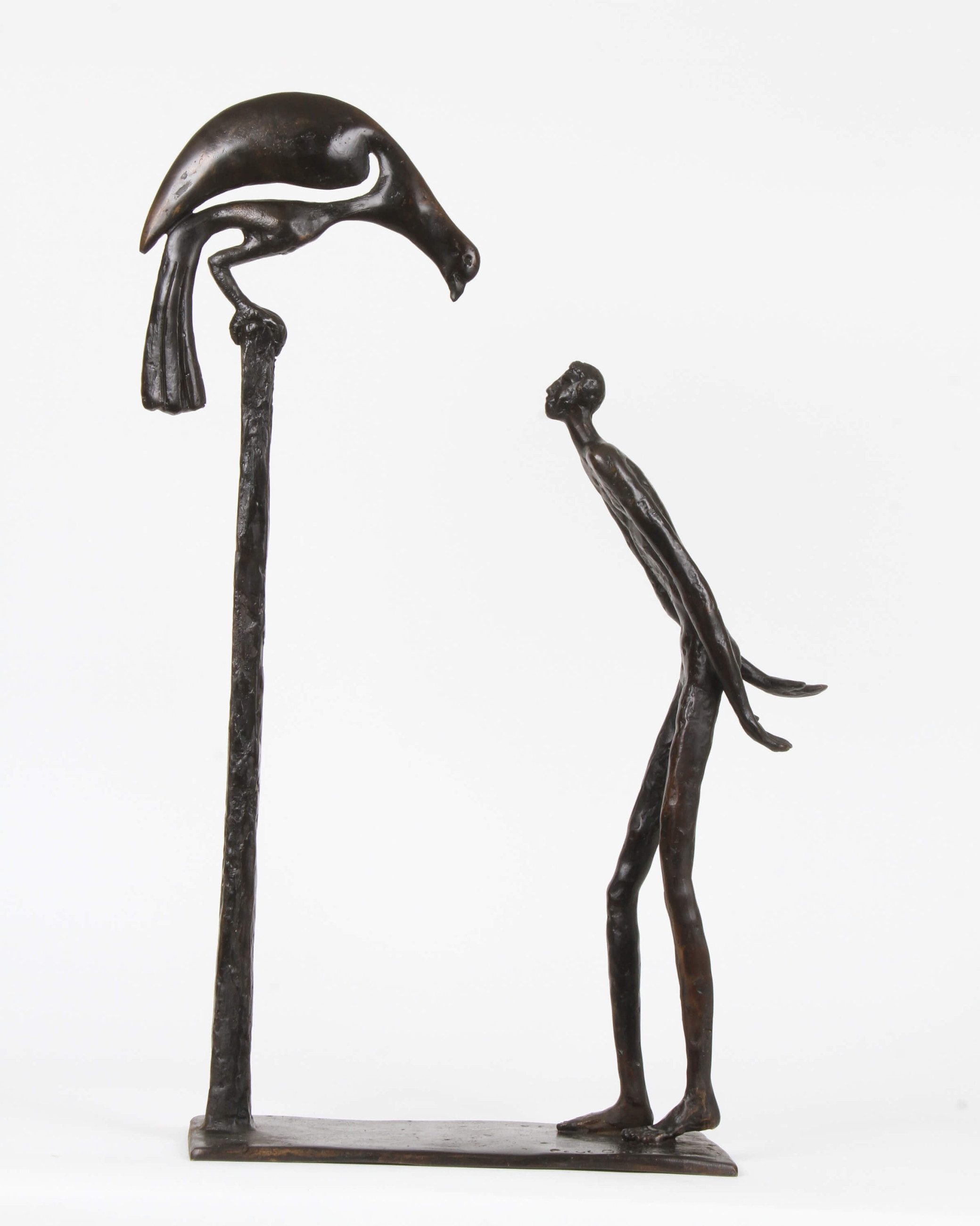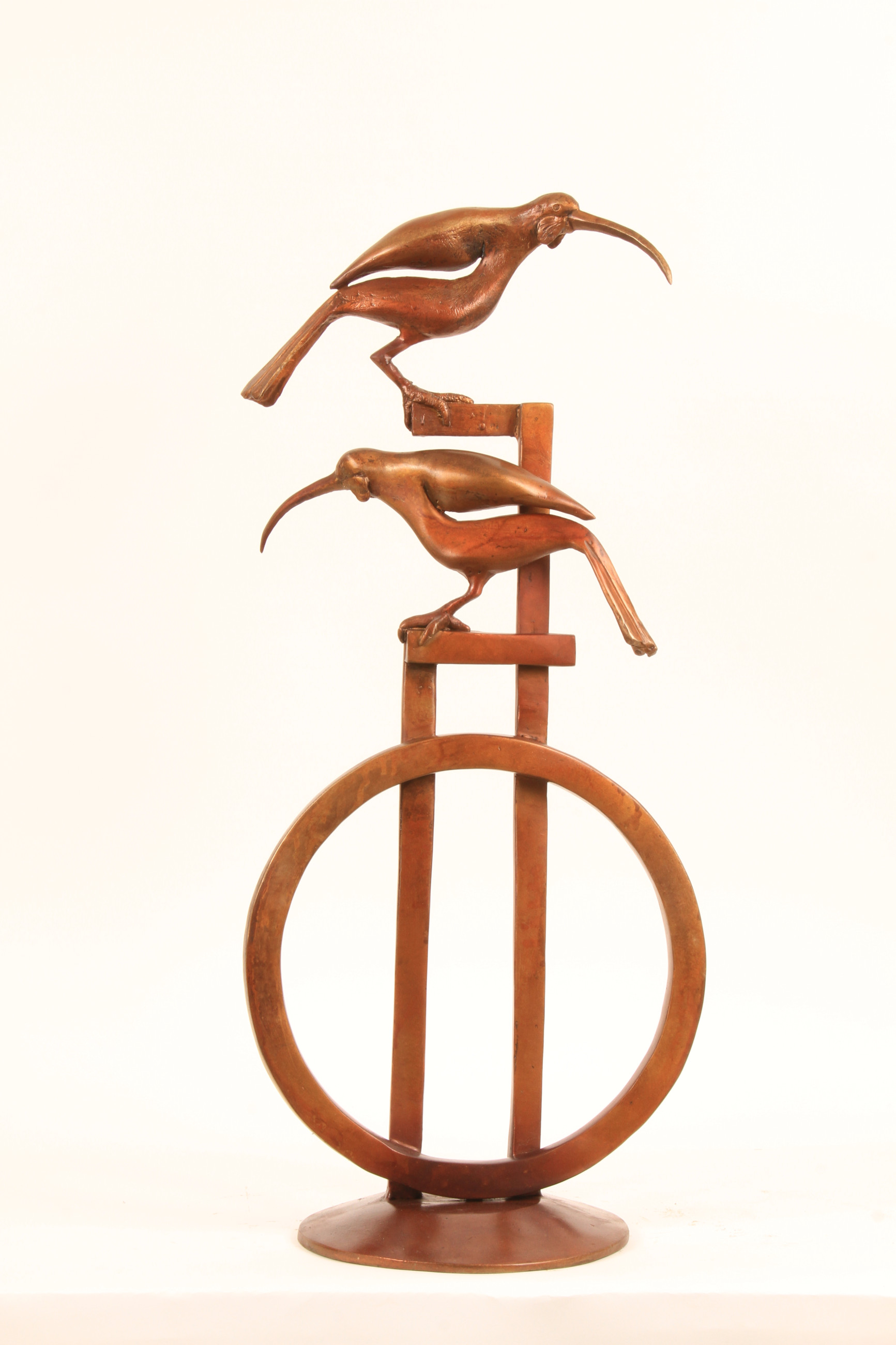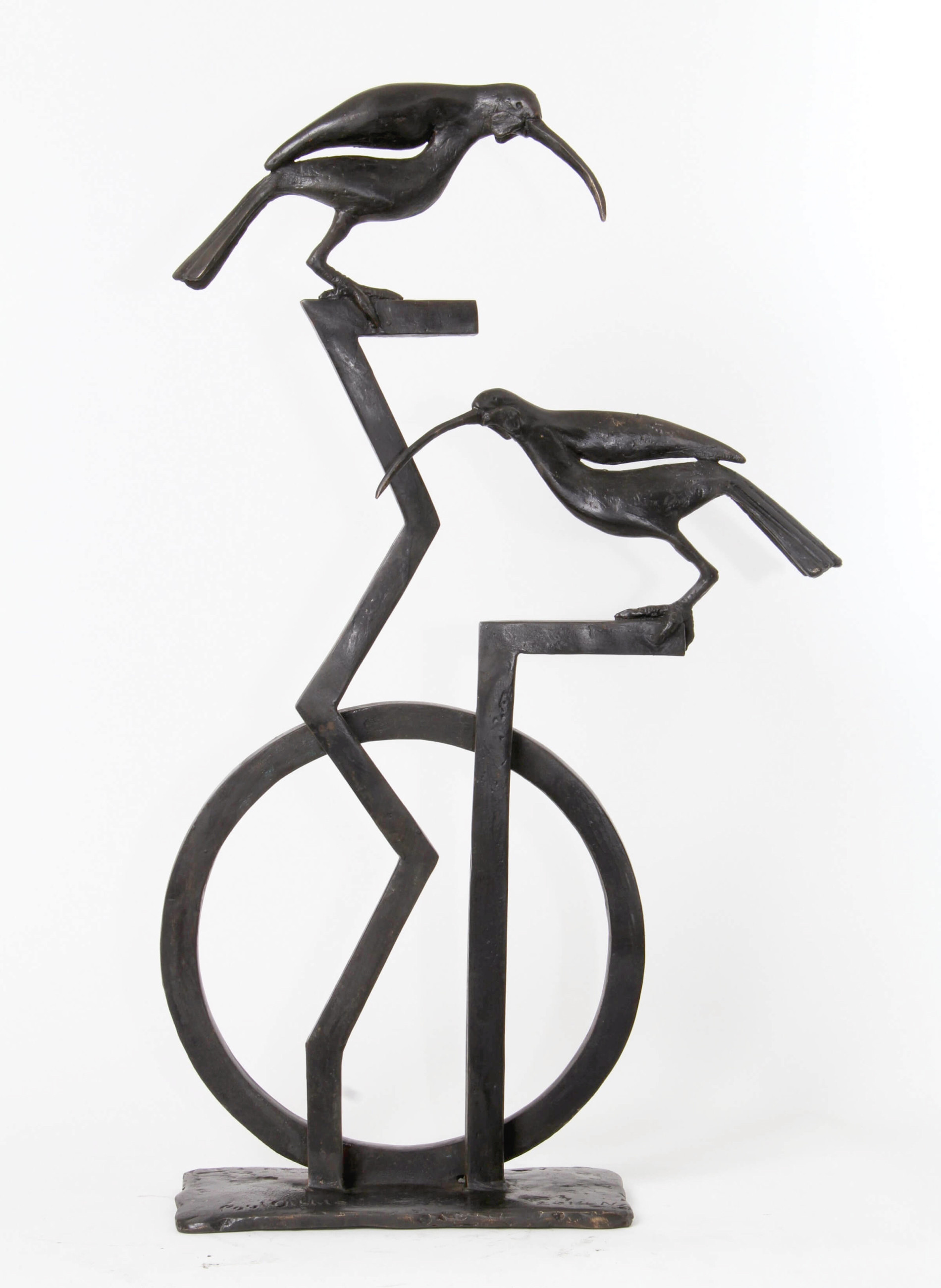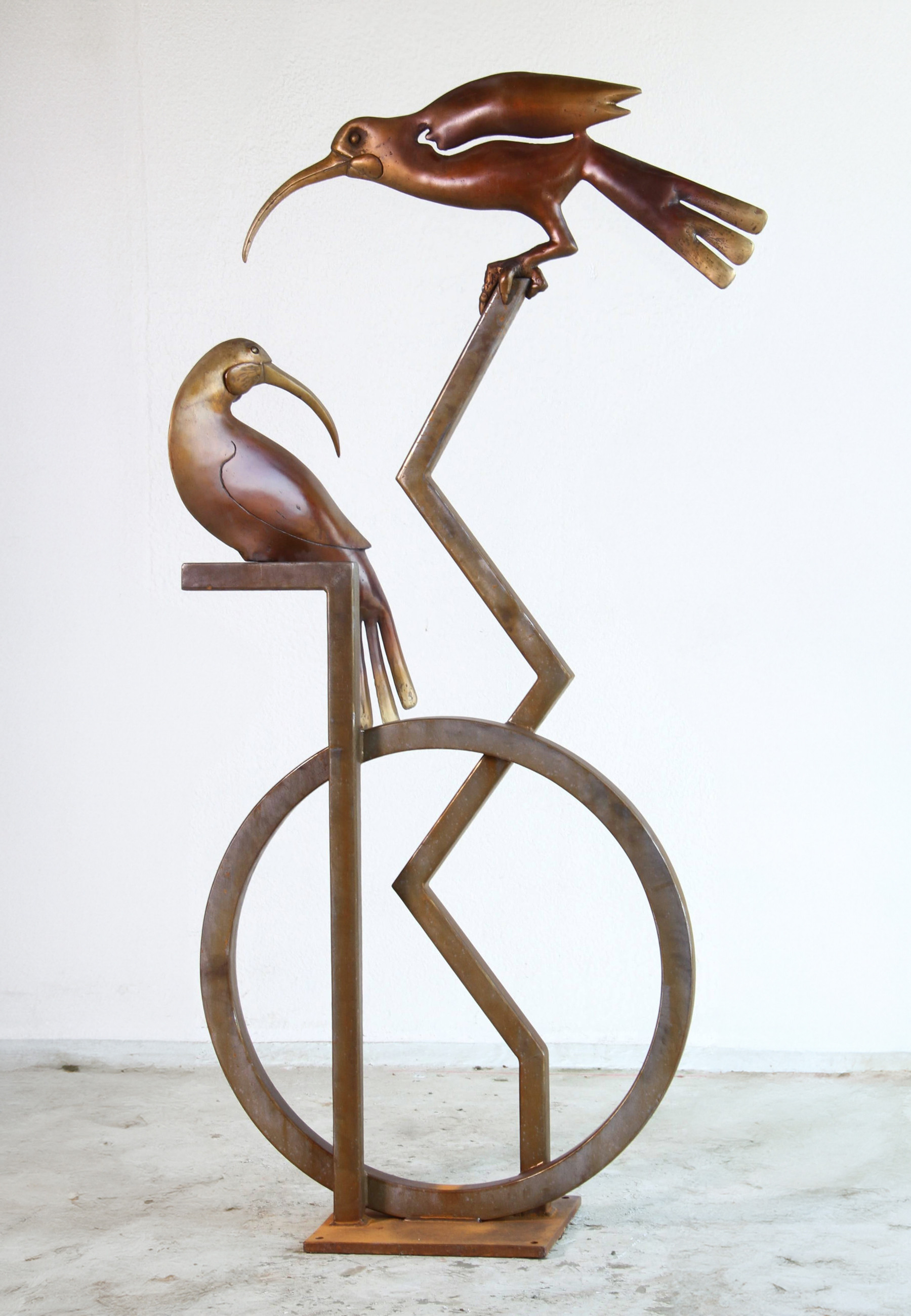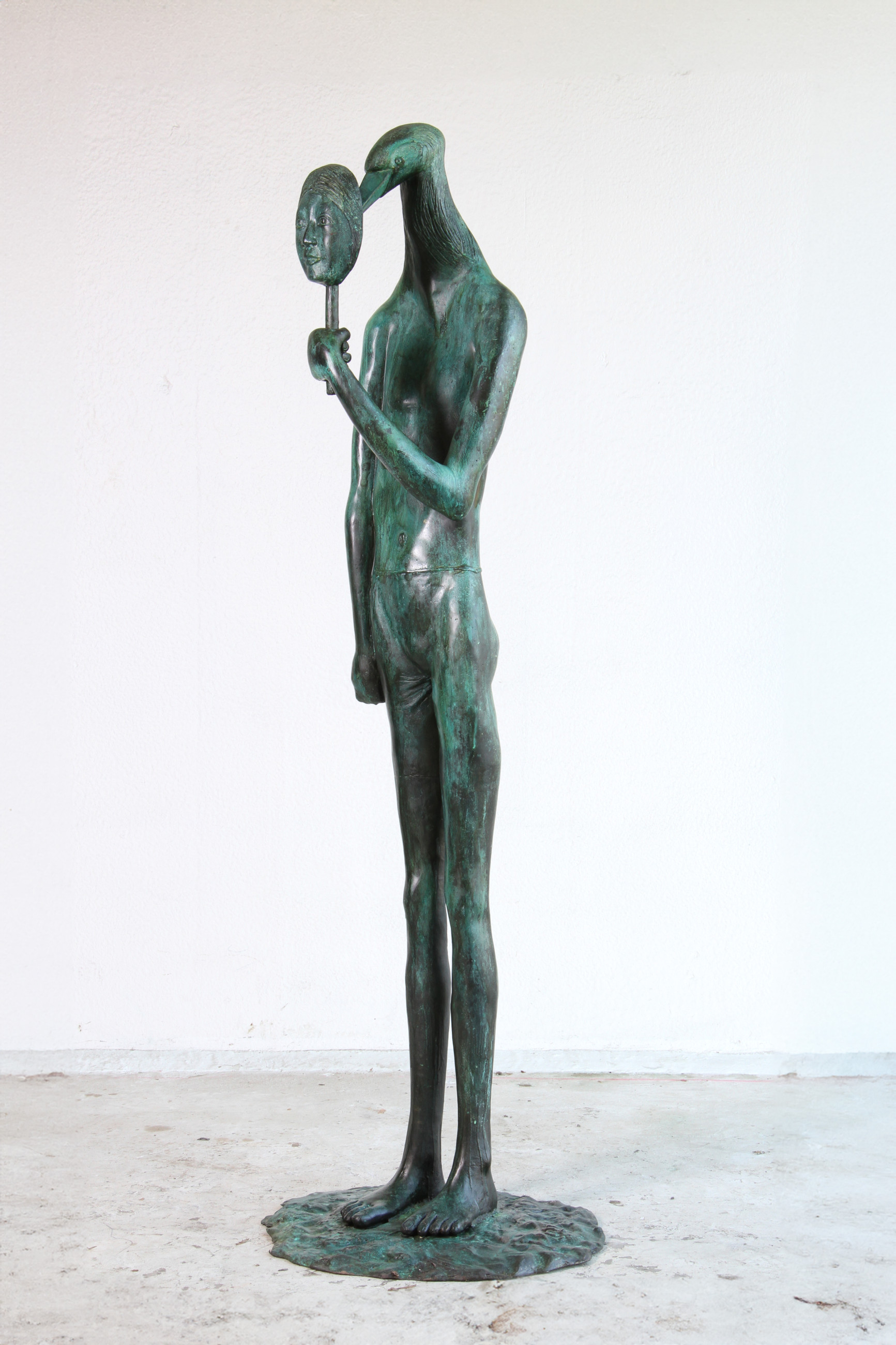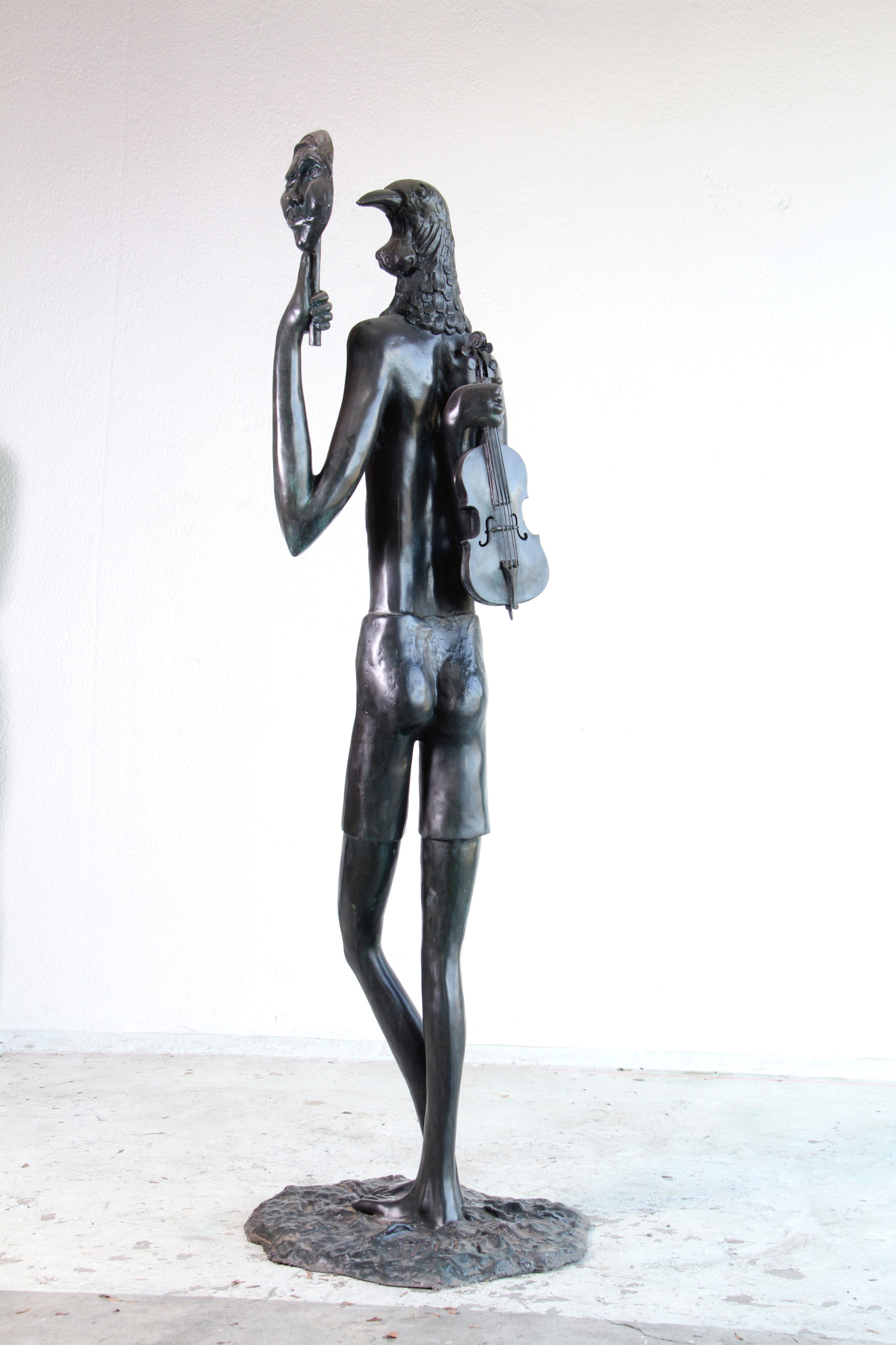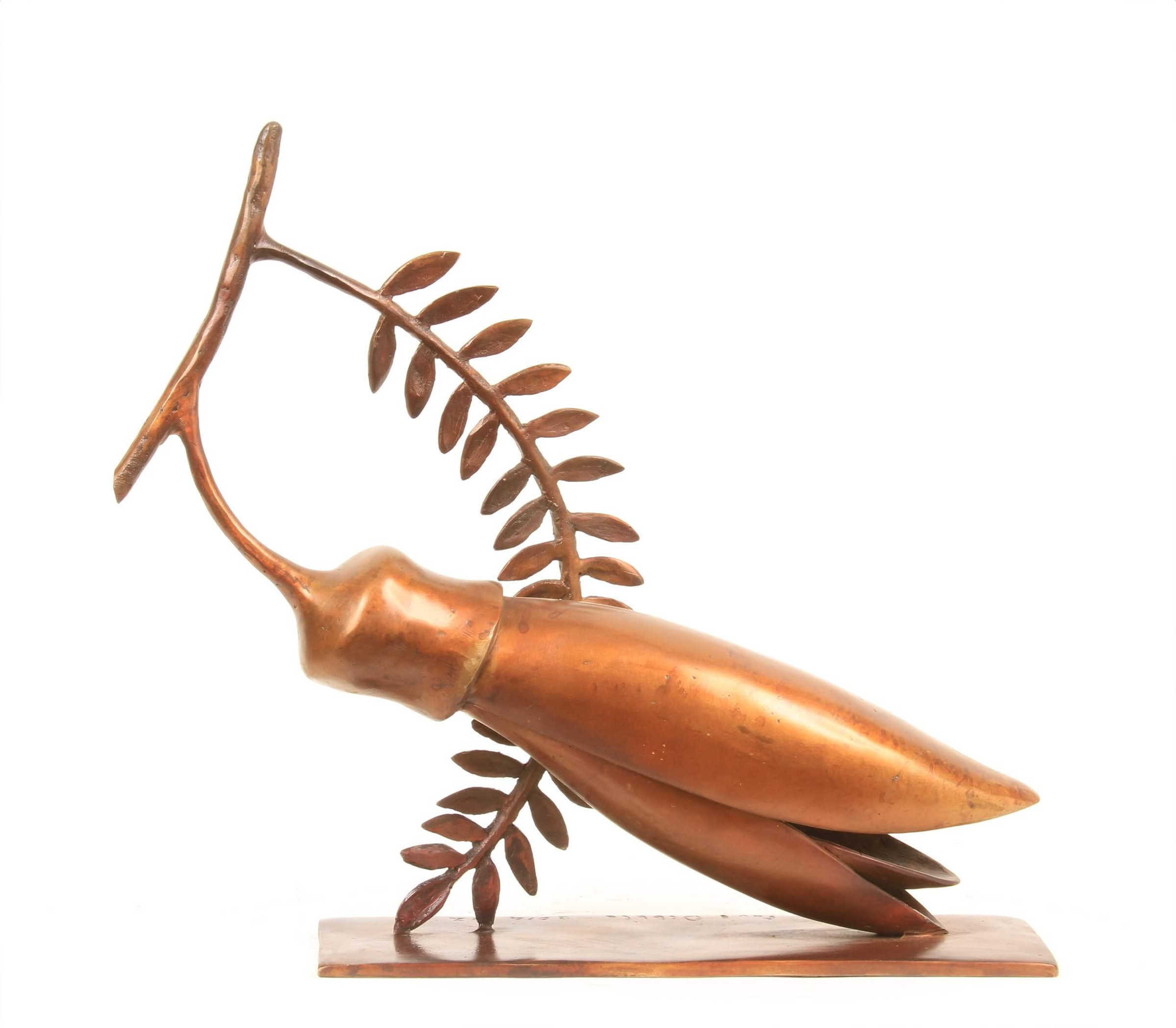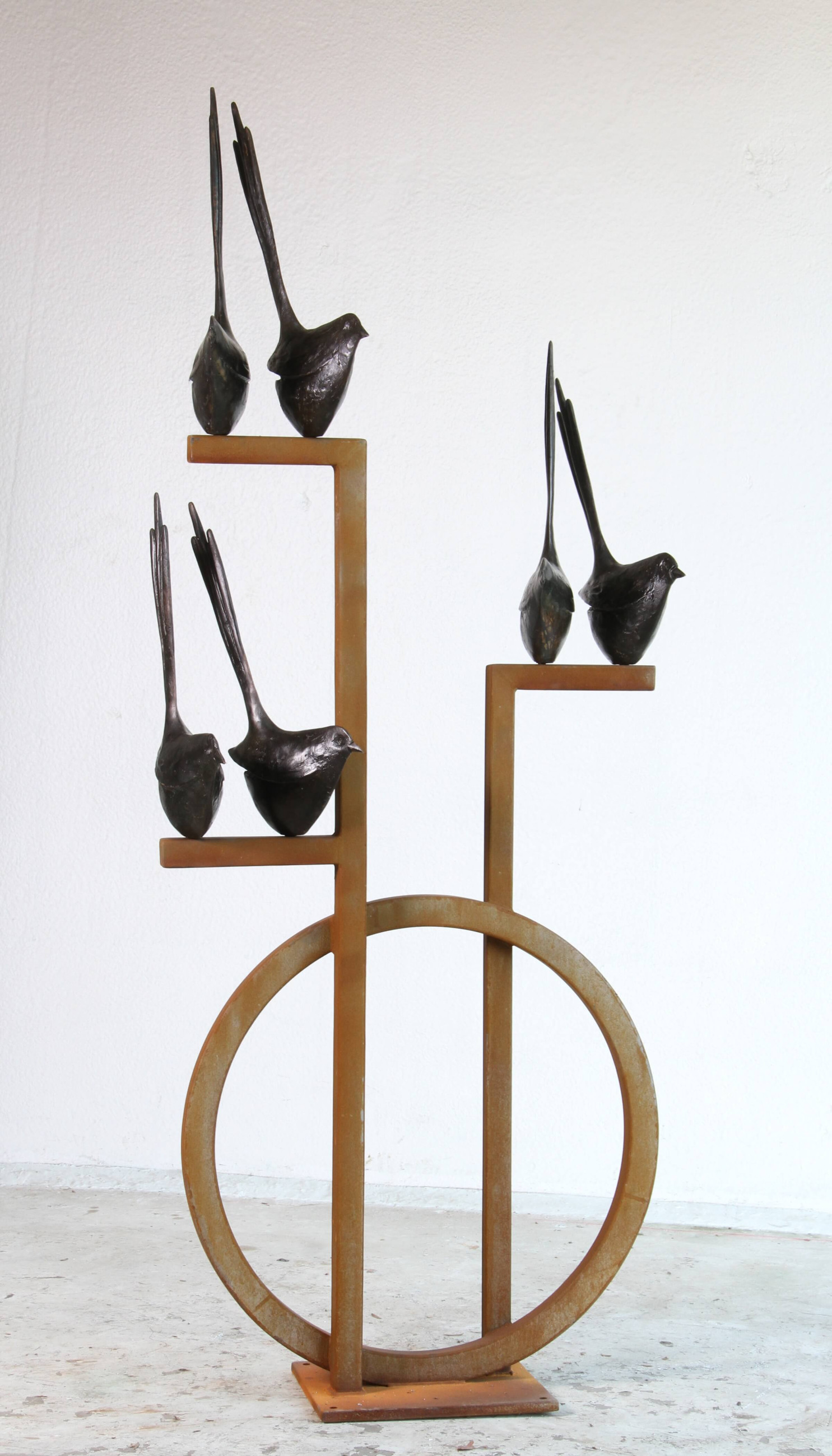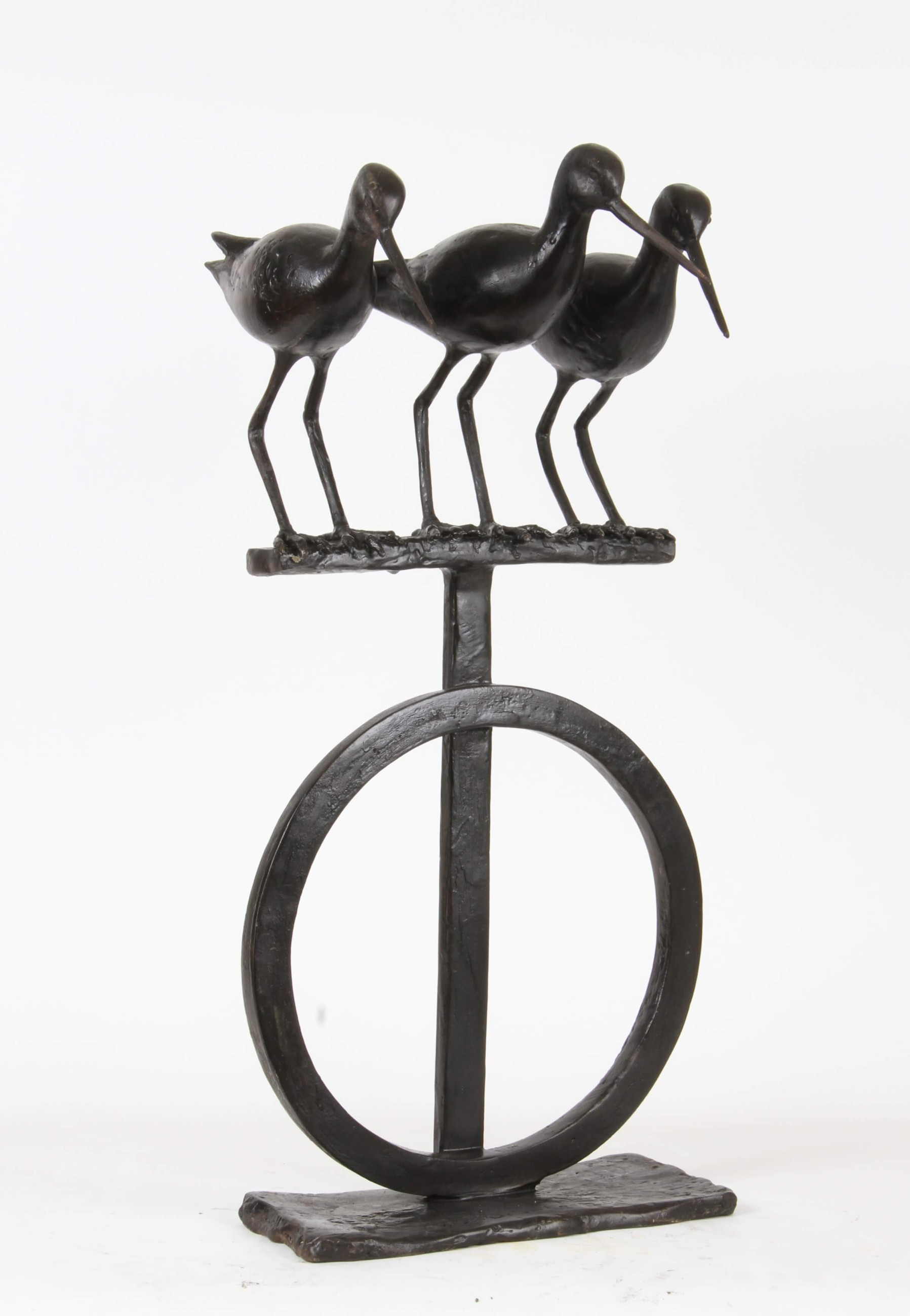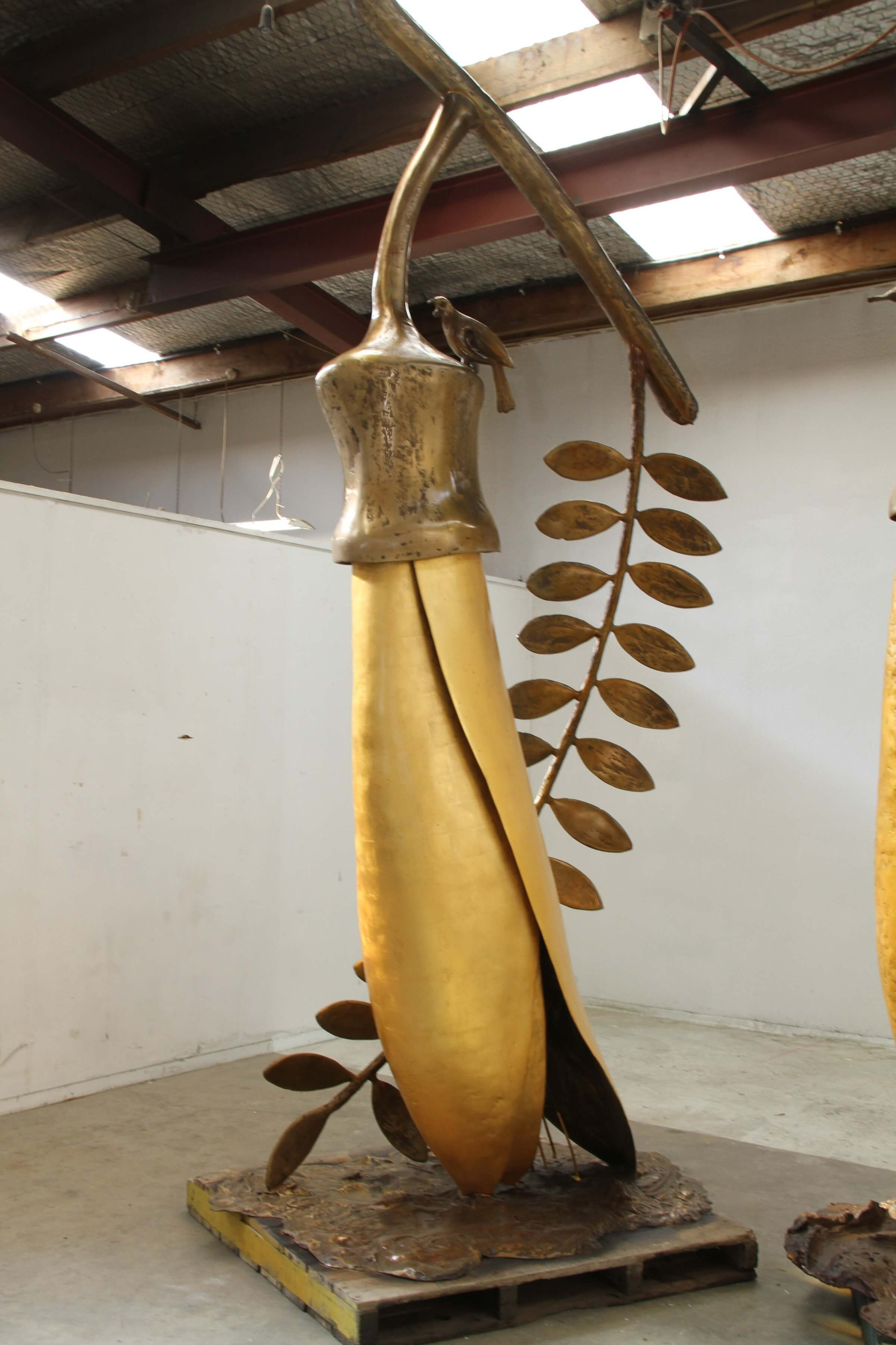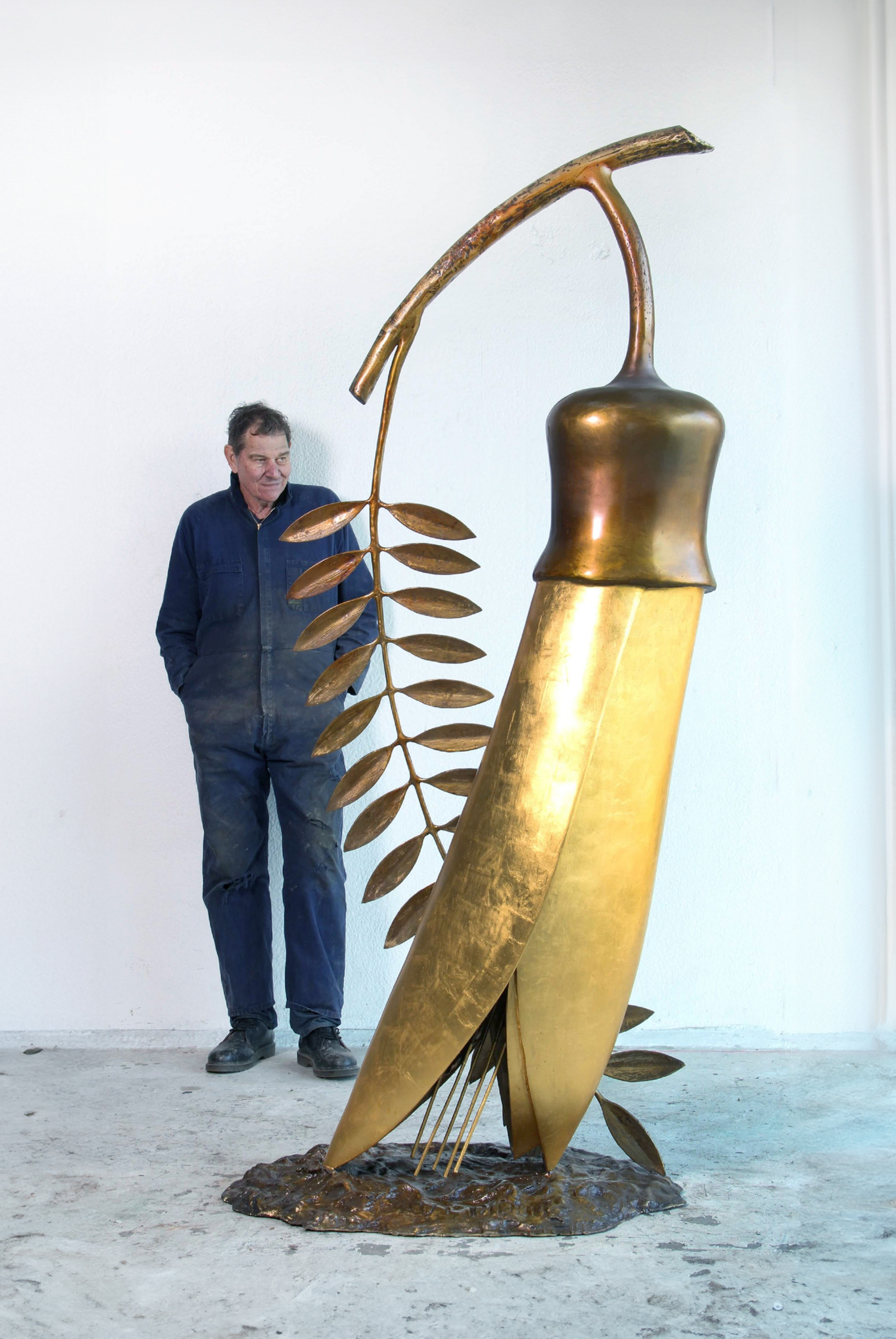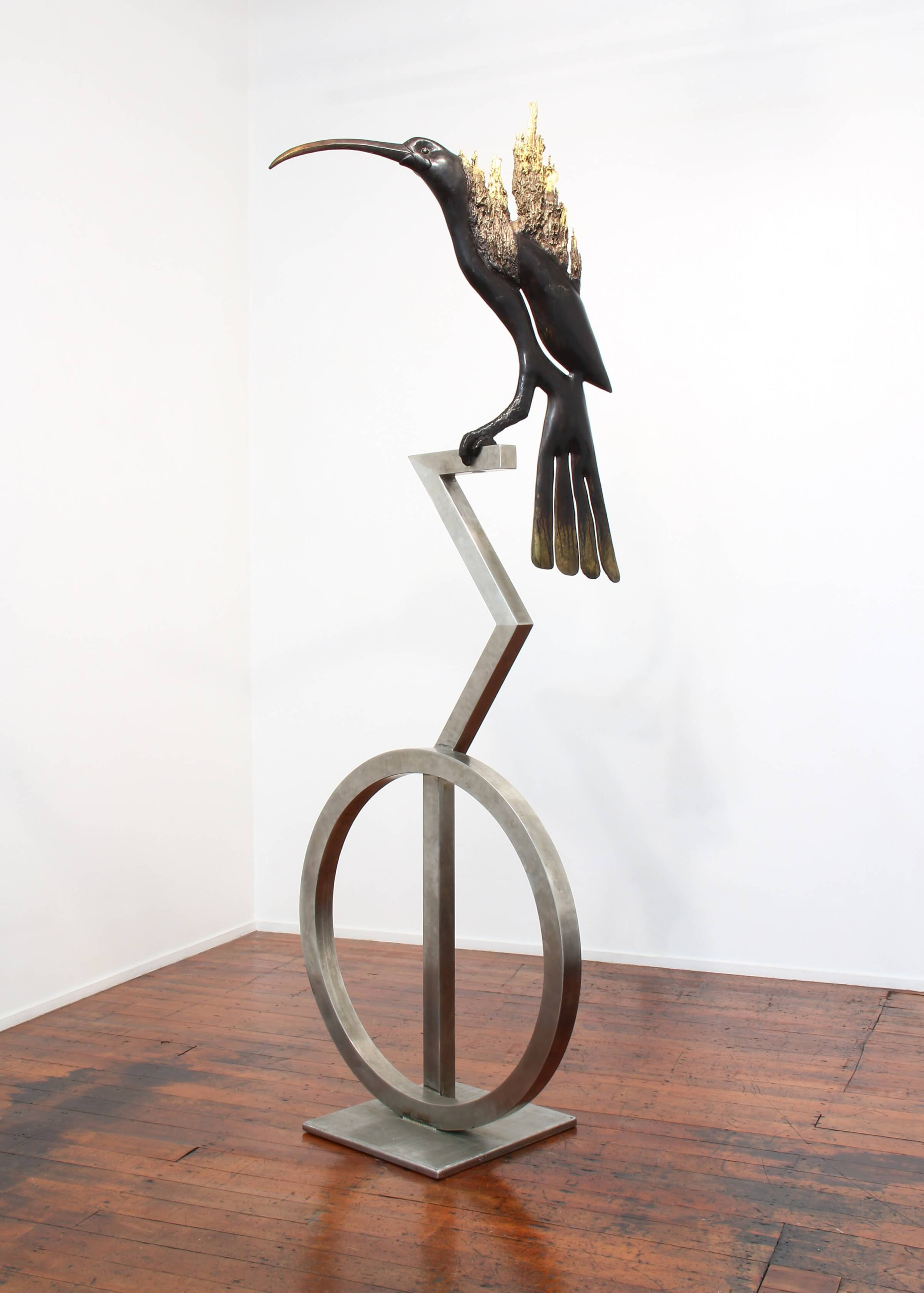November 12 - December 6, 2014 The Gold of the Kōwhai
November 12 - December 6, 2014 The Gold of the KōwhaiSolo, Gow Langsford Gallery, Auckland
Text
It is part tribute, part lament, this exhibition by Paul Dibble titled The Gold of the Kōwhai. Its tribute is shown in the giant kōwhai flower blown up from its usual few centimetres to a towering 3.3 metres, painstakingly modeled and cast in bronze and then gilded in 24 carat gold and lacquered to produce a glowing yellow. For it is this glowing colour that makes the kōwhai unique. In the New Zealand bush, famed for its rich density of green, a beauty heightened by absence of colour, we view the arresting scene of the full yellow kōwhai against its green backdrop at the beginning of spring each year. As well as beauty, the kōwhai are rich suppliers of nectar, feeding many birds that then populate the forest.
Depicted as large emblems of their former self, they also suggest the concerns of loss, a worry that one day, in their native setting, they might be few. Conservation is always deemed an issue of today, a cause for election slogans and the rallying of new generations. It seems a new found tragedy. But these concerns and the title, The Gold of the Kōwhai, are drawn from a poem penned and published in 1898 where William Pember Reeves – statesman, lawyer, High Commissioner and part time poet – wrote in London, thinking of home and the felling of trees that was destroying native woods. In faraway foreign lands he worried on the loss of “those gentle forest-haunting things” that “lived with their trees … and passed away.”
Kōwhai became part of Dibble’s sculpture vernacular when he began his research for the New Zealand memorial at Hyde Park Corner in London in 2006. The brief was to create, not just a memorial to the lives of soldiers lost, but to acknowledge the shared history with Britain and as a place to illustrate the identity of New Zealand. Thus, a section of the work was devoted to the theme of flora and includes an illustrated part of Pember Reeves’ poem, with the relief modelling of a forest scene partly abstracted, a coil of tree fern and kōwhai blossoms hanging down.
Dibble’s mock forest isn’t empty. Small models dot the room with birds, the “whir of the wood pigeons”, the tūī and bell bird “he who rings”, the “eaters of honey, honey-sweet in song”, to again borrow the poet’s descriptions – positioned on geometric stands, even the huia, now extinct, in profusion. Two odd characters are also lurking, behind masks, bird-man figures – a heron and a tūī, giving the game away with their titles of “I am”. If they have been lured by the nectar from the kōwhai it is more than ‘super-sized’. Through their bird eyes we can try to see the world of the New Zealand forest.
